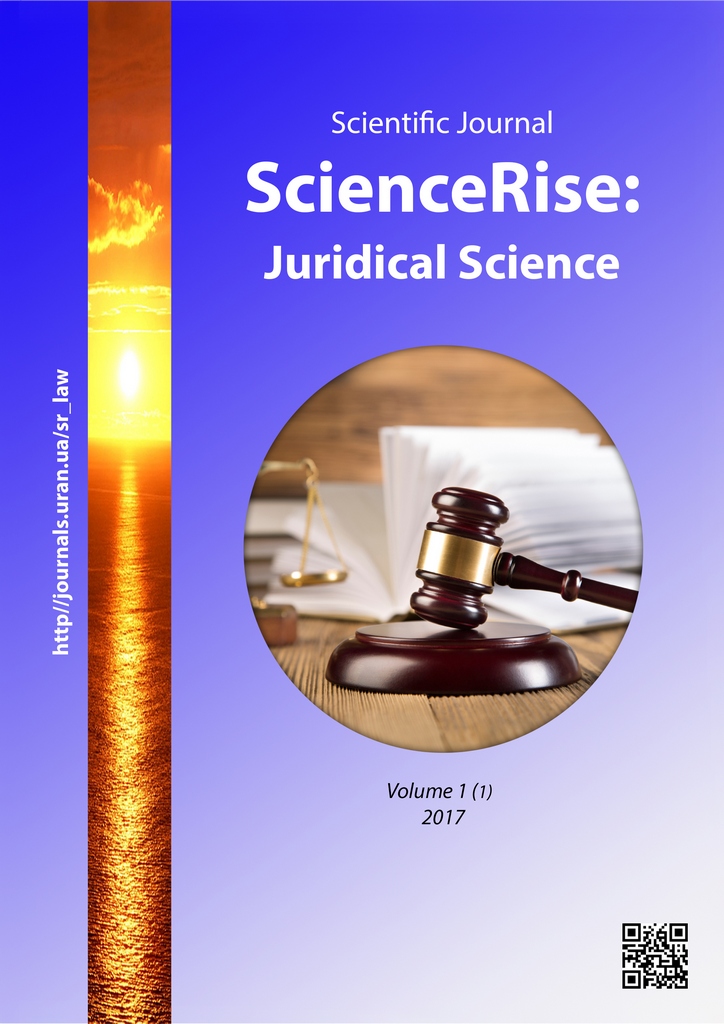To the question about the date of establishment of ukrainian state
DOI:
https://doi.org/10.15587/2523-4153.2017.111185Keywords:
Ukraine-Rus, Kievan Rus, Tale of past years, state, UkraineAbstract
The article analyzes the formation and development of early state formations in Ukraine, as well as the most important preconditions for the formation of the early Ukrainian princely state – Ukraine-Rus. Much attention is paid to the substantiation of the time when the Ukrainian state was founded, which keeps its official countdown from 838 AD – one of the first written references in the chronicle " Tale of past years". Particular attention is paid to the characteristics of the periods of Ukrainian state-building processes. It is substantiated that the Ukrainian people live for several thousand years on their historical land. For more than 1000 years, the Ukrainian people had their own statehood in various forms and due to unfavorable internal and external factors forced to fight for its revival. The Ukrainian state originates from the princely state of Ukraine-Rus, which had a significant influence on the political life of both Western European countries and neighboring Asian countries, as well as states that were of great importance in the trade system between Europe and Asia. Subsequently, the Galician-Volyn state was no less powerful than the embodiment of the state idea of the Ukrainian people. The creation of the Galician-Volyn state is an important stage in the history of Ukrainian statehood. This state has achieved significant political development and, in terms of economy and culture, has become one of the most advanced countries in the time of Europe. It is noted that the Ukrainian national revolution of 1917–1921 had an epochal historical significance. After a long historical period of russification, national and social enslavement at the beginning of the XX century. The Ukrainian people restored their independent state. At that time, Ukraine experienced various forms of national statehood: the Ukrainian People's Republic for the Central Rada, the Ukrainian state - the Hetmanate P. Skoropadsky, the Ukrainian People's Republic under the Directory, and the Western-Ukrainian People's Republic, but failed to maintain state independence. In the centuries-old history of the state-building of the Ukrainian people, the events associated with its liberation struggle of the early twentieth century have a truly historic significance.
On August 24, 1991, Ukraine proclaimed the revival of its state independence. The proclamation by Ukraine of its state sovereignty was only the first, albeit a very important step on the path to a strong, democratic, rule of law. The development of this state is a difficult, long-lasting, problematic process in which Ukraine has a great state-building experience of historical development
References
- Shchodra, O. (2014). Kyivska Rus: nevykonane zavdannia suchasnoho pokolinnia istorykiv. Rus – Ukraina. Khudozhnia kultura Ukrainy, 4, 21–32.
- Hrushevskyi, M. S. (2002). Zvychaina skhema ruskoi istorii y sprava ratsionalnoho ukladu istorii skhidnoho slovianstva. Tvory. Vol. 1: Suspilno-politychni tvory (1894–1907). Lviv, 75–82.
- Tyshchyk, B. Y., Boiko, I. Y. (2015). Istoriia derzhavy i prava Ukrainy. Kyiv: In Yure, 808.
- Shchodra, O. (2016). Istorychna heohrafiia Ukrainy vid naidavnishykh chasiv do kintsia XVIII stolittia. Lviv: LDUFK, 296.
- Videiko, M. Yu. (2003). Trypilska tsyvilizatsiia. Kyiv: Akademperiodyka, 183.
- Kuzmynets, O., Kalynovskyi, V. (2002). Istoriia derzhavy i prava Ukrainy. Kyiv: Ukrainy, 446.
- Hrushevskyi, M. S. (1994). Istoriia Ukrainy-Rusy. Vol. 1. Kyiv: Naukova dumka, 736.
- Myronenko, O. M., Usenko, I. B. (2001). Kyivska Rus. Yurydychna entsyklopediia. Vol. 3. K–M. Kyiv: Ukrainska entsyklopediia, 89–90.
- Braichevskyi, M. (1999). Pokhodzhennia Rusi. Vybrani tvory. New York-Kyiv, 336.
- Braichevskyi, M. Yu. (1968). Pokhodzhennia Rusi. Kyiv: Naukova dumka, 228.
- Braichevskyi, M. (2009). Vybrane. Vol. 1. Vol. 2. Kyiv: Vyd-vo im. Oleny Telihy, 720, 816.
- Pavliuk, S. P. (2006). Etnoheneza ukraintsiv. Sproba teoretychnoi konstruktsii. Lviv: NANU. Instytut narodoznavstva, 248.
- Pavliuk, S. (1993, 1995). Pro pokhodzhennia ukrainskoho narodu. Naukovyi visnyk Ukrainskoho Vilnoho Universytetu. Narod, natsiia, derzhava: ukrainske pytannia u yevropeiskomu vymiri. Munich–Lviv, 21–28.
- Pavliuk, S.; Pavliuk, S. (Ed.) (2007). Etnohenez. Mala entsyklopediia ukrainskoho narodoznavstva. Lviv: Instytut narodoznavstva NAN, 832.
- Bertini Annals. Available at: https://uk.wikipedia.org/wiki/Бертинські аннали
- The Story of Past Years. Available at: https://uk.wikipedia.org/wiki/Повість минулих літ
- Honcharenko, V. D. (1996). Ternystyi shliakh do nezalezhnosti. Visnyk Akademii pravovykh nauk Ukrainy, 7, 3–14.
- Kulchytskyi, V. S., Tyshchyk, B. Y., Boiko, I. Y. (2006). Halytsko-Volynska derzhava (1199–1349). Lviv: Biblos, 280.
- Honcharenko, V. D., Yermolaiev, V. M., Rumiantsev, V. O.; Honcharenko, V. D. (Ed.) (2013). Istoriia derzhavy i prava Ukrainy. Kharkiv: Pravo, 704.
- Rymarenko, Yu. I. et. al. (Eds.) (1996). Mala entsyklopediia etnoderzhavoznavstva. Kyiv: Dovira: Heneza, 342–343.
- Narysy istorii ukrainskoi revoliutsii 1917–1921 rokiv. Vol. 1 (2011). Kyiv: Naukova dumka, 390.
- Honcharenko, V. (2017). Zakonodavchi orhany v Ukraini za chasiv Ukrainskoi revoliutsii 1917–1921 r. Pravo Ukrainy, 3, 20–30.
Downloads
Published
How to Cite
Issue
Section
License
Copyright (c) 2017 Ihor Boiko

This work is licensed under a Creative Commons Attribution 4.0 International License.
Our journal abides by the Creative Commons CC BY copyright rights and permissions for open access journals.
Authors, who are published in this journal, agree to the following conditions:
1. The authors reserve the right to authorship of the work and pass the first publication right of this work to the journal under the terms of a Creative Commons CC BY, which allows others to freely distribute the published research with the obligatory reference to the authors of the original work and the first publication of the work in this journal.
2. The authors have the right to conclude separate supplement agreements that relate to non-exclusive work distribution in the form in which it has been published by the journal (for example, to upload the work to the online storage of the journal or publish it as part of a monograph), provided that the reference to the first publication of the work in this journal is included.









